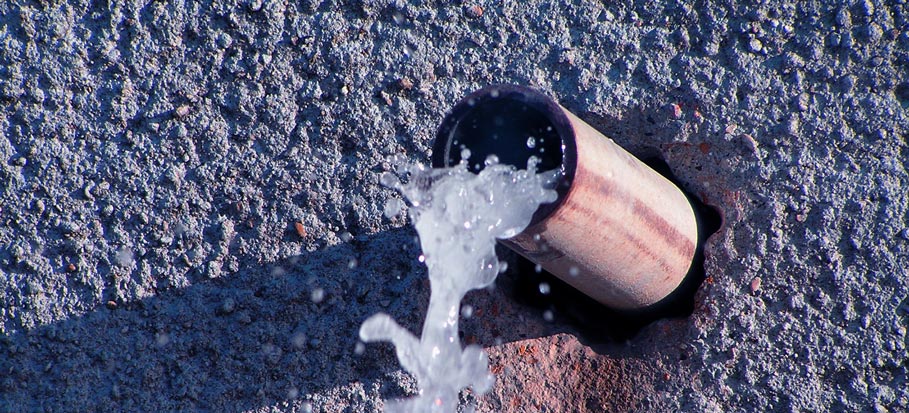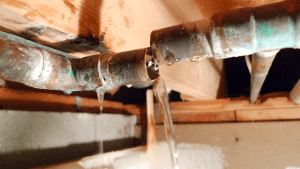Guide To Water Leak Discovery At Home
Get StartedWe've discovered the article on Leaking water lines down the page on the web and decided it made perfect sense to talk about it with you in this article.

Early discovery of dripping water lines can mitigate a potential calamity. Besides conserving you cash, it will certainly decrease the aggravation as well as frustration. The minute you find a leak, calling your plumber for repair work is the very best service. Some tiny water leakages might not be visible. If you can not spot it with your nude eyes, below are some hacks that aid.
1. Take A Look At the Water Meter
Every house has a water meter. Checking it is a guaranteed way that helps you uncover leakages. For starters, turn off all the water sources. Guarantee no person will certainly flush, utilize the tap, shower, run the cleaning machine or dishwashing machine. From there, go to the meter and watch if it will certainly transform. Given that no one is utilizing it, there need to be no motions. If it relocates, that suggests a fast-moving leak. Furthermore, if you find no changes, wait a hr or two and inspect back once more. This suggests you may have a sluggish leakage that can even be underground.
2. Check Water Consumption
Analyze your water bills and also track your water usage. As the one paying it, you should notice if there are any type of discrepancies. If you spot sudden changes, in spite of your consumption being the same, it suggests that you have leaks in your plumbing system. Bear in mind, your water expense should fall under the very same range on a monthly basis. An unexpected spike in your bill shows a fast-moving leak.
Meanwhile, a steady rise every month, despite the very same habits, reveals you have a slow-moving leakage that's also slowly rising. Call a plumber to thoroughly examine your residential property, particularly if you really feel a warm location on your floor with piping below.
3. Do a Food Coloring Test
When it comes to water consumption, 30% comes from commodes. If the color somehow infiltrates your dish during that time without flushing, there's a leak between the container and also bowl.
4. Asses Exterior Lines
Do not fail to remember to examine your outdoor water lines too. Should water seep out of the connection, you have a loosened rubber gasket. One little leakage can squander bunches of water and increase your water costs.
5. Evaluate the scenario and check
Home owners need to make it a habit to check under the sink counters and also even inside cabinets for any kind of bad odor or mold development. These two warnings suggest a leakage so prompt attention is needed. Doing routine evaluations, also bi-annually, can conserve you from a significant trouble.
Check for discolorations and also weakening as many pipelines as well as appliances have a life span. If you believe leaking water lines in your plumbing system, do not wait for it to escalate.
Early discovery of leaking water lines can reduce a prospective disaster. Some little water leaks may not be visible. Examining it is a proven method that assists you discover leaks. One little leakage can throw away bunches of water and also spike your water costs.
If you think dripping water lines in your plumbing system, don't wait for it to intensify.
How to Know If Your Home Has a Hidden Leak
Water Meter Reveals Inexplicable Water Usage
If you’d like to test whether or not there’s a leak somewhere in your home, you can do this using your water meter. Here is how to conduct the test:
Don’t use any water in your home for at least 30 minutes; this also means not turning on faucets or water-using appliances.
Go outside, and check your water meter for activity.
If your water meter shows that there was activity, even though no one was using any water, this proves that there is a leak in your home.Visible Mold or Mildew Growth
Leaks behind walls create moist, dark environments that allow mold and mildew to grow and thrive. Eventually, you might see mold growth forming on the wall closest to a hidden leak.
If mold is growing in an area that receives a high amount of moisture, such as a bathroom, it may simply be an indication that better ventilation is needed. However, if you see mold growth on a wall or the ceiling in an area where you would not expect, you probably have a hidden leak.
Musty, Mildew Odor
Sometimes you might not be able to see the mold or mildew that is growing as a result of a leak. However, the smell can give the problem away just as easily. If you catch a whiff of something musty, there’s a good chance that old water is collecting somewhere in your home that you can’t see.
Stained/Warped Walls, Ceilings, or Floors
When your home soaks up water, a variety of red flags can become visible, including ceiling stains, bubbling drywall, warped walls, and sagging floors. While these issues can be caused by excess humidity, they can also be signs that a pipe or plumbing connection has started leaking behind your walls.
Inexplicably High Water Bill
After a while, you get a general sense for what your water bill should be. If you own a pool or sprinkler system, your bill will tend to be higher during summer. However, if you receive a water bill that seems especially high, and you can’t figure out what caused it, then you may have a hidden leak somewhere that’s increasing your bill.
https://www.plumbingjoint.com/blog/2019/july/how-to-know-if-your-home-has-a-hidden-leak/

I'm very interested by Top leak detection hacks and I'm hoping you enjoyed my post. Sharing is good. Who knows, you may just be doing someone a favor. We recognize the value of reading our article about Top leak detection hacks.